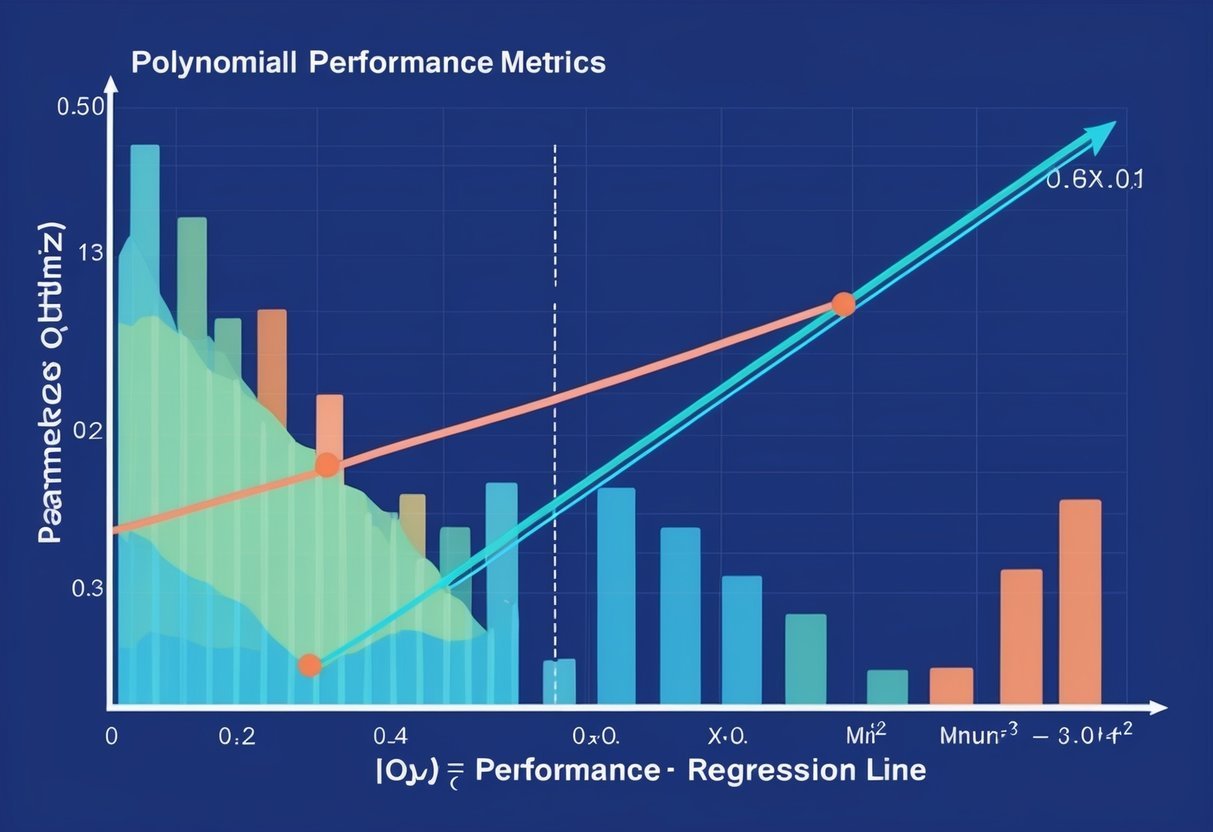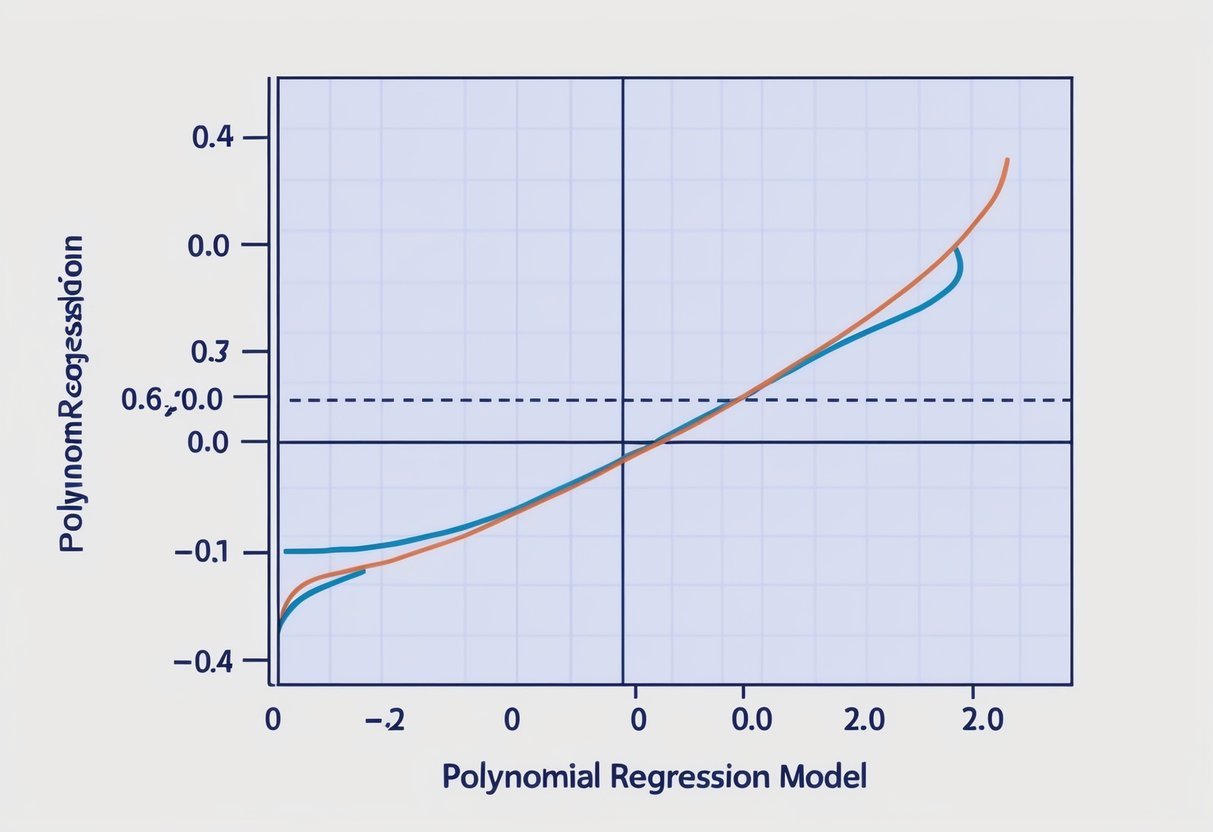Fundamentals of Calculus for Machine Learning
Calculus plays a critical role in understanding and developing machine learning models. By studying derivatives and integral calculus, practitioners can unravel how models learn and make predictions from data.
Understanding Derivatives
Derivatives are essential in machine learning for optimizing models. The derivative of a function measures how a function’s output changes as its input changes.
In the context of machine learning, derivatives are used to find the best parameters for models by minimizing error.
Gradient descent is a common technique that relies on derivatives. This process involves taking small steps in the direction of decreasing error.
Partial derivatives are often involved when dealing with multiple variables. This helps in tuning multiple parameters at once, which is vital for models with several inputs.
Derivatives also assist in understanding the behavior of functions. They identify whether a function is increasing or decreasing at a particular point, and they locate maximum or minimum values.
In machine learning, this information can inform whether a model is improving as expected or if adjustments are necessary to enhance performance.
Exploring Integral Calculus
Integral calculus is crucial in understanding accumulations over intervals, which is pivotal in machine learning. Integration deals with the total sum or area under a curve.
In probability and statistics, this is related to finding the cumulative distribution function, helping to model data distributions.
In machine learning, integrals are often used in expectations and averages. For example, the expected value of a function can be found through integration, which is vital for making population-wide predictions.
Integration also aids in solving differential equations, which are sometimes present in complex models. Learning how these equations work helps to model dynamic systems that change over time or in response to different inputs.
Differential Calculus and Its Applications
Differential calculus is essential in understanding how changes in input affect the output, particularly in fields like optimization and neural networks. It deals with concepts such as limits, continuity, and derivatives, which are central to solving real-world problems.
Concept of Limit and Continuity
The concept of a limit is crucial in differential calculus. A limit describes the value that a function approaches as the input approaches a certain point.
This concept forms the foundation for defining continuity, which means that small changes in input lead to small changes in output. Continuity ensures that a function behaves predictably without abrupt jumps or breaks.
Understanding limits and continuity is important for defining derivatives, a fundamental aspect of differential calculus. These concepts help in predicting and analyzing the behavior of functions, which is particularly important in machine learning models.
Rules for Differentiation
Differentiation involves finding the derivative of a function, which represents the rate of change or the slope of the function at any given point.
The power rule, product rule, quotient rule, and chain rule are essential for calculating derivatives of complex functions.
- Power Rule: Useful for functions of the form (x^n).
- Product Rule: Applies when differentiating products of two or more functions.
- Quotient Rule: Used for functions divided by each other.
- Chain Rule: Important for compositional functions, allowing differentiation of nested functions.
Proficiency in using these rules is vital for solving calculus problems and has direct applications in optimizing algorithms.
Application in Gradient Descent
Gradient descent is a key optimization technique used in machine learning. It involves iteratively moving towards the minimum of a function by following the negative gradient or slope.
Differential calculus enables the calculation of these gradients efficiently, making the process of finding global or local minima computationally feasible.
By understanding how derivatives function in gradient descent, machine learning practitioners can efficiently train models on large datasets. The role of differential calculus in this context is to guide models to their optimal state, thereby enhancing accuracy and performance in predictive analytics.
Integral Calculus and Machine Learning
Integral calculus is crucial in machine learning for modeling and analyzing changes. It helps in optimizing algorithms and computing probabilities. Understanding antiderivatives and the area under the curve are essential skills.
Antiderivatives and Integration Techniques
Antiderivatives help undo differentiation, a key process in calculus. They provide a way to find functions when their rates of change are known.
In machine learning, antiderivatives can assist in formulating models that predict future data trends.
Key techniques include substitution and integration by parts. These methods simplify complex integrals, making them easier to solve.
Substitution involves changing variables to simplify an integral, while integration by parts breaks down integrals into more manageable pieces.
Applying these techniques in machine learning enables better control over algorithm optimization.
Understanding the Area Under the Curve
The area under the curve (AUC) is a vital concept in integral calculus. It represents the accumulated value of a function across a range.
In machine learning, AUC is often used in evaluating model performance.
For classification models, AUC can show how well a model distinguishes between classes. A higher AUC means a better-performing model.
Calculating AUC involves integrating the curve of a receiver operating characteristic (ROC) graph. This involves probability and accuracy, reflecting the model’s ability to categorize correct results.
Mastery of this concept allows for more precise assessments and improvements in machine learning systems.
Multivariate Calculus for Machine Learning

Multivariate calculus is key when working with machine learning models. It involves techniques for functions of several variables, aiding in optimization and model refinement.
Partial Derivatives and Gradients
Partial derivatives are used to measure how a function changes as one variable changes while keeping others constant. They are vital in optimizing functions with many variables.
For a function (f(x, y)), the partial derivative with respect to (x) is denoted as (frac{partial f}{partial x}).
Gradients are vectors composed of all partial derivatives of a function. The gradient points in the direction of the steepest increase of the function.
In machine learning, gradients are used in algorithms like gradient descent to minimize error functions by iteratively moving towards lower values.
Jacobian and Hessian Matrices
The Jacobian matrix is a matrix of all first-order partial derivatives of a vector-valued function. It’s essential for understanding how outputs change in response to input changes, which is necessary for tasks like data transformation and backpropagation in neural networks.
The Hessian matrix, on the other hand, is a square matrix of second-order partial derivatives. It provides information on the curvature of the function, useful for determining local maxima and minima.
By examining the Hessian, one can assess the concavity or convexity of the function, aiding in the convergence of optimization algorithms.
Applying Linear Algebra in Machine Learning

Linear algebra is fundamental to understanding and applying techniques in machine learning. The concepts of vectors, matrices, and eigenvalues are crucial. They enable efficient data processing and transformation, which helps in building better models and improving learning efficiency.
Vectors and Vector Spaces
Vectors are essential in representing data and features in machine learning. They can represent data points, model parameters, or entire datasets.
A vector space is a collection of vectors that can be scaled and added together, allowing for operations like scaling, translation, and rotation. This is important for algorithms like support vector machines, where vectors define decision boundaries and hyperplanes.
Matrices and Matrix Operations
Matrices are used to organize and manipulate data in machine learning. In algorithms, they help perform transformations and operations like scaling and rotation.
Common matrix operations include addition, subtraction, and multiplication, which can enhance computation efficiency.
Matrix multiplication, for example, is used to calculate weights and inputs in neural networks, allowing for fast computation across datasets.
Eigenvalues and Eigenvectors
Eigenvalues and eigenvectors play a crucial role in reducing the dimensions of large datasets. This is key in techniques like Principal Component Analysis (PCA).
Eigenvectors represent directions of data spread, while eigenvalues indicate their magnitude.
By focusing on the principal eigenvectors, PCA reduces data complexity while retaining essential features, enabling efficient data processing and analysis. Eigenvalues also help in determining data variance and feature importance.
Optimization Algorithms for Deep Learning

Deep learning heavily relies on optimization algorithms to improve model performance. These algorithms adjust model parameters to minimize errors. Two vital components include variations of gradient descent and the backpropagation algorithm, which fine-tune neural networks through iterative calculations.
Gradient Descent Variations
Gradient descent is a cornerstone in deep learning optimization. It operates by iteratively updating model parameters to reduce the error function.
Variations of this algorithm, such as Stochastic Gradient Descent (SGD), Mini-batch Gradient Descent, and Momentum-based Gradient Descent, offer different advantages.
SGD updates parameters using a single data point, which can speed up training but may lead to noisy convergence.
Mini-batch Gradient Descent, on the other hand, strikes a balance by using small sets of data points, providing smoother updates.
Momentum builds on these methods by accumulating past gradients, allowing for more stable and faster convergence in the optimization process.
Understanding Backpropagation
Backpropagation is critical in training deep neural networks. It relies on the chain rule of calculus to compute the gradient of the loss function with respect to each model parameter.
This algorithm calculates how each parameter contributes to the error, enabling adjustments that reduce overall network errors.
Backpropagation involves two main phases: the forward pass, where input data is fed through the network to produce output, and the backward pass, where gradients are computed layer by layer.
These gradients are then used to update weights, typically employing gradient descent methods, leading to optimized performance in tasks of varying complexity.
Probability Theory in Machine Learning

Probability theory plays a vital role in machine learning, helping algorithms make decisions based on uncertainty. It is essential in modeling and interpreting data, with key concepts like Bayes’ Theorem and probability distributions forming the foundation for many machine learning techniques.
Bayes’ Theorem and Its Applications
Bayes’ Theorem allows machine learning models to update their predictions as new data becomes available. It relies on the relationship between conditional probabilities, making it essential for tasks like classification and pattern recognition.
In practice, Bayes’ Theorem is used in spam filtering, where the probability of a message being spam is updated as more messages are analyzed. This theorem helps models better predict outcomes by continuously adjusting to new evidence.
Bayesian networks, a sophisticated use of Bayes’ Theorem, allow for sophisticated modeling of relationships among variables, offering valuable insights in complex domains.
Probability Distributions and Density Functions
Probability distributions describe how values are spread in a dataset, which is crucial for understanding patterns.
In machine learning, common distributions include the normal distribution, which models many natural phenomena, and the Poisson distribution, often used for event counts.
Probability density functions (PDFs) provide a way to visualize these distributions, showing the likelihood of different outcomes.
PDFs are vital in density estimation, an approach used to predict how data points are grouped in a dataset.
By utilizing both probability distributions and density functions, machine learning models can make more precise predictions, improving the accuracy and reliability of data analysis.
Data Preparation and Feature Engineering

Data preparation and feature engineering are crucial steps in machine learning. Proper handling of missing data, as well as effective feature scaling and transformation, can significantly impact the performance of algorithms. These processes ensure that the data is clean and structured, which helps algorithms learn better.
Handling Missing Data
Missing data can cause significant issues in any machine learning project. Ignoring it is typically not an option, as algorithms need complete data to function properly.
Several methods are used to address this, including deletion, imputation, and interpolation.
Deletion refers to removing data entries where information is missing. This method can be effective but might cause a loss of useful data.
Imputation involves replacing missing values with estimates, using methods like mean, median, or mode substitution.
Interpolation predicts missing values based on the available data trend. Each method has its strengths and weaknesses, and the choice depends on the dataset’s specifics and the importance of missing values.
Feature Scaling and Transformation
Feature scaling ensures that different features contribute equally to the distance calculations in machine learning algorithms. Without it, some features could dominate others if they are on different scales.
Two common techniques are normalization and standardization.
Normalization scales data to a specific range, usually 0 to 1. This is useful for algorithms that require bounded input.
Standardization scales the data to have a mean of 0 and a standard deviation of 1, aiding algorithms that assume a normal distribution.
Feature transformation may involve logarithmic or square root transformations, often helping to reduce skewness and stabilize variances.
Proper feature scaling and transformation play a vital role in improving the performance and accuracy of machine learning models.
The Role of Calculus in Neural Networks

Calculus is essential in training neural networks. It plays a key part in optimizing performance by allowing accurate calculations and adjustments.
Two important elements are the chain rule and backpropagation, which involve derivatives and gradients to refine neural network models.
Understanding the Chain Rule
The chain rule is vital when dealing with derivatives in neural networks. It allows the computation of the derivative of composite functions.
This is essential as neural networks consist of multiple layers, each containing numerous neurons. Calculating how changes in input affect the output requires the chain rule.
For neural networks, this rule aids in calculating gradients, which determine how weights within the network should be adjusted.
By applying the chain rule, it is possible to find the slope of the loss function with respect to each weight, guiding improvements.
In a neural network’s context, understanding the chain rule simplifies how complex relationships between layers are managed. It ensures updates are correctly propagated through every layer, refining the network’s ability to learn.
Backpropagation and Weight Updates
Backpropagation is a method used to fine-tune neural networks. It involves updating the weights to minimize the error in predictions.
By leveraging derivatives and the chain rule, backpropagation calculates the gradient of the loss function with respect to weights.
This process begins at the output and moves backward through the layers, adjusting weights in each layer.
By doing so, it aims to reduce the discrepancy between actual and expected outcomes. The updates are done using a method known as gradient descent which depends heavily on gradients to optimize weights.
In essence, backpropagation ensures that weight updates are efficient, making neural networks more accurate over time. Through repeated adjustments based on calculations from calculus, networks gradually improve in performance and accuracy.
Advanced Machine Learning Models

Advanced machine learning models like Support Vector Machines (SVM) and Generative Adversarial Networks (GANs) leverage deep learning and optimization algorithms. These models are crucial for solving complex problems by working with probabilities and high-dimensional data.
Support Vector Machines (SVM)
Support Vector Machines (SVM) are used for classification and regression tasks in machine learning. They work by finding the best hyperplane that separates data into distinct classes.
The effectiveness of an SVM relies on its ability to handle linear and non-linear data through kernel functions, which transform input data into higher dimensions.
Optimization algorithms play a vital role in determining the SVM’s hyperplane by minimizing classification errors.
Common kernels include linear, polynomial, and radial basis function (RBF). The choice of kernel can significantly impact the model’s performance, making it important to select the appropriate one based on the dataset.
SVMs are widely used due to their robustness in handling complex data structures with accuracy.
Generative Adversarial Networks (GANs)
Generative Adversarial Networks (GANs) consist of two neural networks: the generator and the discriminator. These networks work against each other in a zero-sum game framework.
The generator creates data samples similar to a given probability distribution, while the discriminator evaluates the authenticity of these samples.
GANs are particularly useful in generating high-quality images, audio, and even text, as they learn to model intricate data distributions without explicit programming.
They rely on deep learning techniques to train each network, with optimization algorithms fine-tuning their interactions.
Understanding the delicate balance between the generator and discriminator is crucial, as it determines the GAN’s ability to produce realistic outputs.
Frequently Asked Questions
Integral calculus is essential for machine learning, aiding in the development and optimization of algorithms. A solid grasp of calculus boosts understanding, but it is not always necessary for beginners. Several resources can help enhance skills in this area. Below are answers to common questions about the role of integral calculus in machine learning.
What role does integral calculus play in machine learning algorithms?
Integral calculus helps compute changes in quantities, which is important in machine learning for evaluating models. It aids in understanding how a model’s predictions change as the inputs change, especially using vector calculus.
Can I learn machine learning without a strong background in integral calculus?
It is possible to begin learning machine learning without deep calculus knowledge. While a background in calculus can offer deeper insights, many accessible courses and tools abstract away complex math to make learning more approachable for beginners.
How is integral calculus applied in optimization problems for machine learning?
Integral calculus is used in optimization techniques to find minimum or maximum values of a function. These techniques are applied in the training phase of models to adjust parameters for better accuracy. Concepts like evaluating integrals are important in this context.
Are there any recommended textbooks focused on calculus for machine learning practitioners?
“Mathematics for Machine Learning” is a notable textbook that covers essential math topics, including calculus, relevant to machine learning. The book provides a solid foundation for those looking to deepen their mathematical understanding in machine learning.
What are the prerequisites for understanding integral calculus in the context of machine learning?
To grasp integral calculus in machine learning, one should be familiar with algebra, functions, and limits. Understanding these concepts offers a smoother transition into more advanced topics like the definite integral.
How does multivariable calculus enhance the mathematical modeling of machine learning systems?
Multivariable calculus allows for modeling systems with multiple inputs, crucial for complex machine learning models. It helps in numerical computation and optimizing functions. It also helps in understanding relationships between variables in high-dimensional spaces.
























